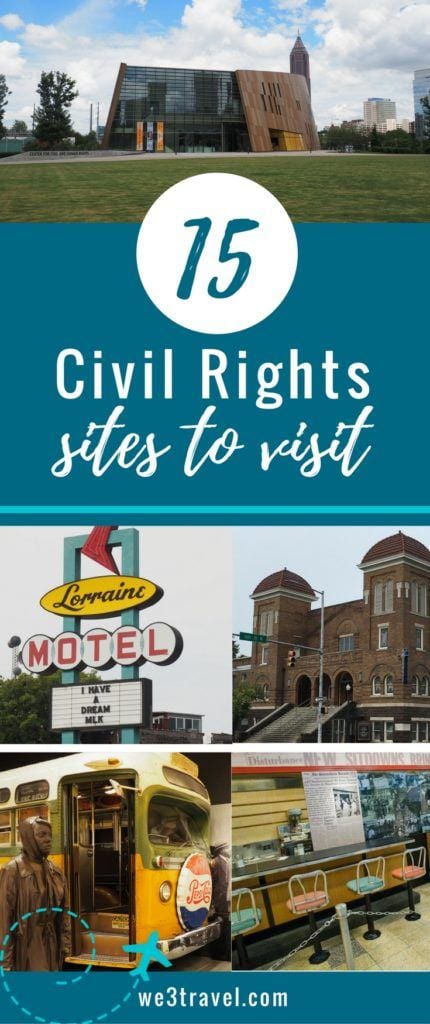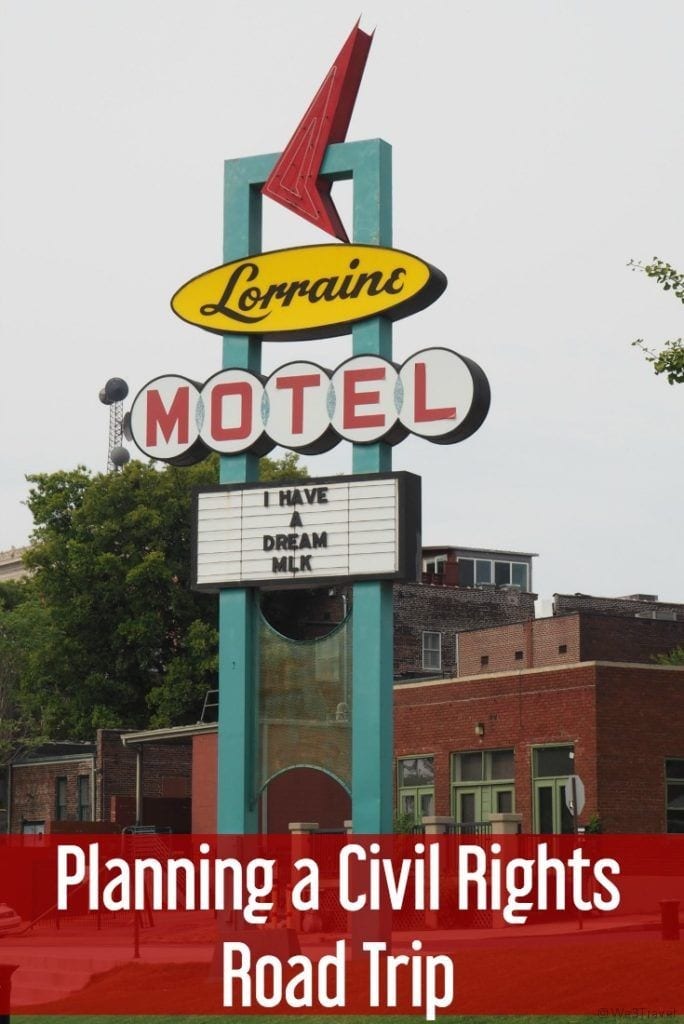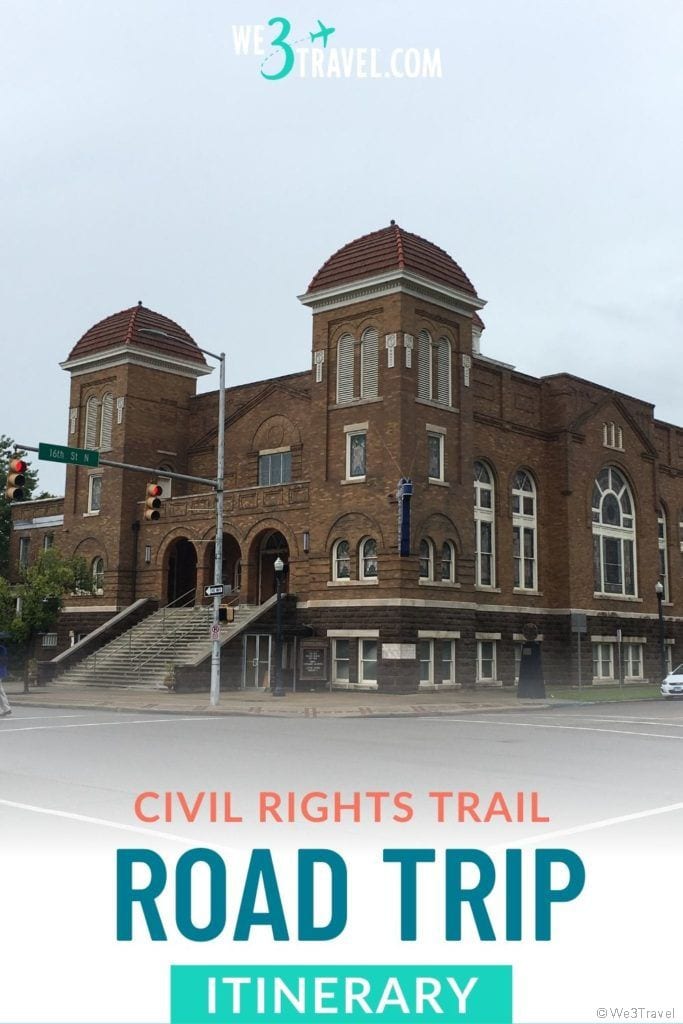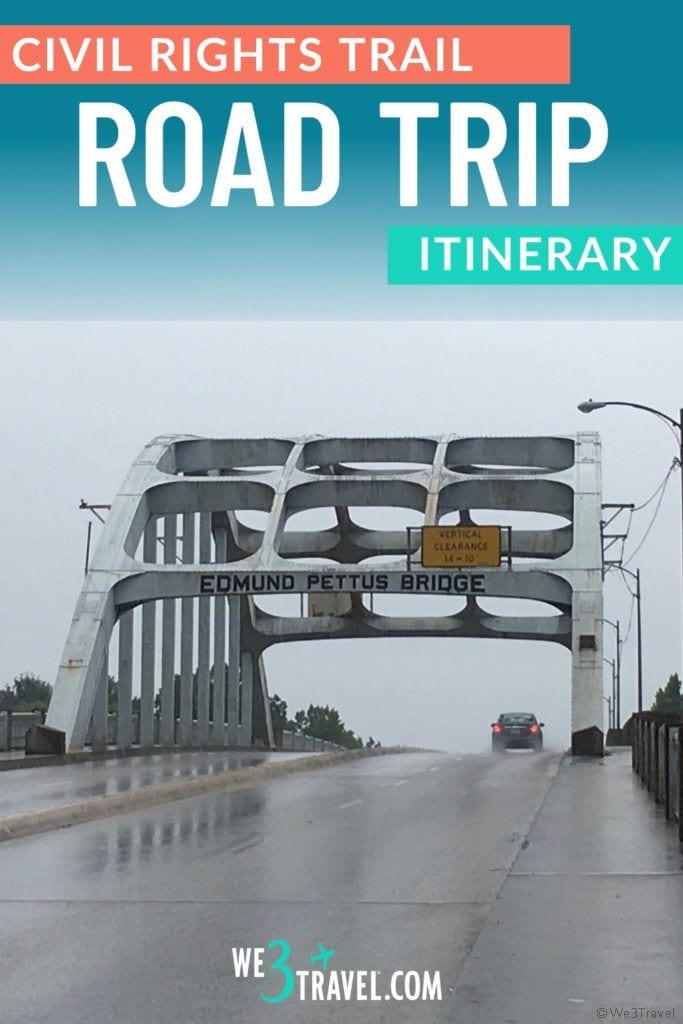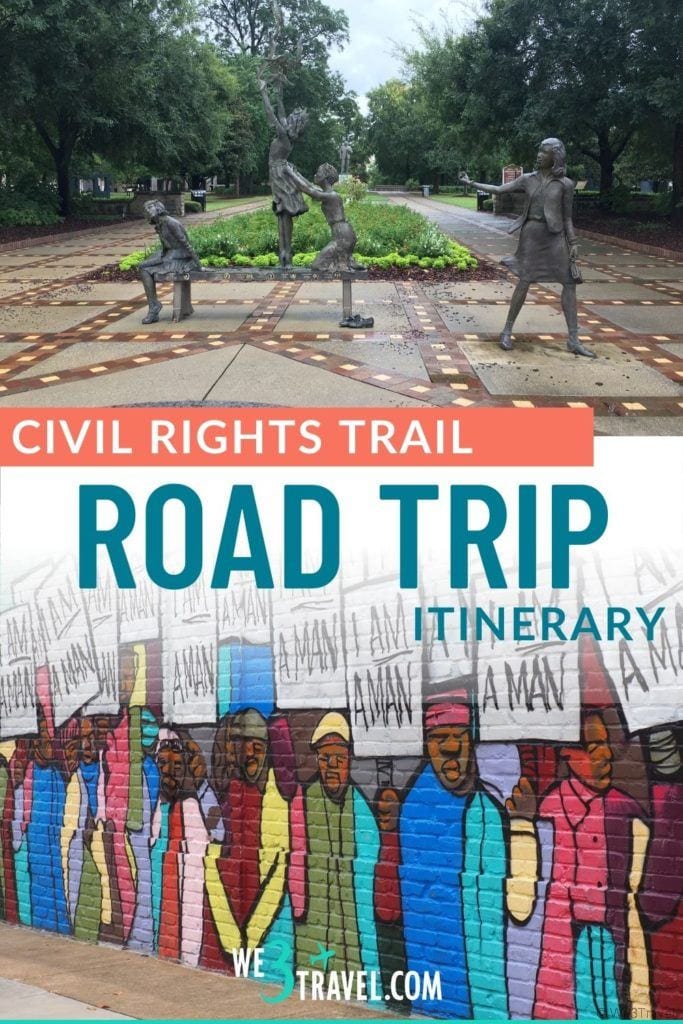Stepping away from the lunch counter, my hands were shaking and tears were welling up in my eyes. I glanced over at Hannah, who at thirteen was just old enough to participate in this interactive exhibit at the Center for Civil and Human Rights in Atlanta. As our eyes met I knew that the experience was just as powerful for her as it was for me.
You would think that after ten days on a Civil Rights road trip learning about the Civil Rights Movement, we would have become desensitized. But as you sit down, clamp the headphones over your ears, put your palms flat on the countertop, close your eyes and listen to the voices shouting in your ears you can almost feel the angry mob breathing down your back.
As the countertop shakes, you flinch, waiting for the blow to come for you. It only takes a minute and a half of stepping into the shoes of a lunch counter sit-in protester to check your privilege and get a glimmer of understanding for the bravery it took to stand your ground in the face of violence and the threat of death.
It isn’t easy. It may not be what you think of as a “fun” family vacation. But I can’t think of a better time to teach our kids about bigotry, discrimination, the legacy of slavery and the ongoing struggle for human and civil rights both in the United States and around the world.
As we left for our trip, the NAACP had issued a travel warning to advise people of color that their civil rights may be violated if they visit Missouri. We flew home to the appalling news of white supremacists taking to the streets of Charlottesville, a town we loved visiting, spreading their vile disease of hate. We were heartbroken by the tragic loss of life and violence at the hands of a homegrown racist terrorist.
You can’t ignore the fact that the struggle for the words of the Constitution to really apply to everyone equally is ongoing. Over 50 years have gone by since the passage of the Civil Rights Act and we are still dealing with gerrymandering, profiling, and those whose hatred stems from a deep-rooted belief that one race is superior to another.
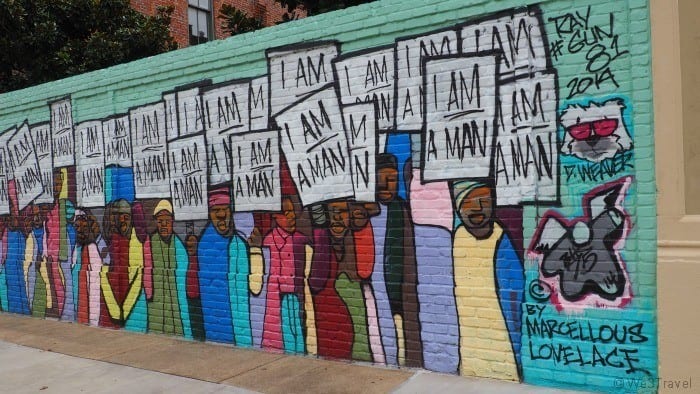
This is a topic that touches my heart, but it was actually Hannah who picked to do a Civil Rights road trip for our annual mother-daughter trip. After studying Civil Rights in school, reading books like The Watsons go to Birmingham, and watching movies like Selma, she wanted to understand more.
I believe strongly that it is incumbent on us as parents to make sure our kids understand where racism comes from, why it is rooted so deeply into our society, the struggle and bravery it takes to fight for equal civil rights and how to be an effective ally.
You can get a sense for this by reading books, watching movies, and studying it in school. But it doesn’t sink all the way in until you walk in the footsteps of Martin Luther King, Jr., John Lewis, Rosa Parks, Diane Nash, Fred Shuttlesworth, Ralph Abernathy, Hosea Williams, and other leaders of the U.S. Civil Rights movement.
Hopefully you can at least visit one of the many museums and centers dedicated to the movement on a civil rights tour. But if you really want the message to hit home, then I would encourage you to plan a civil rights road trip.
Planning a Civil Rights Road Trip
Note: this post is written in partnership with Moon Travel Guides. All opinions are my own.
The official U.S. Civil Rights Trail covers 15 states and the District of Columbia. The itinerary that we followed on our road trip covered just part of the Civil Rights Trail. When planning your own trip, I would also highly recommend investing in a copy of U.S. Civil Rights Trail: A Traveler’s Guide to the People, Places, and Events that Made the Movement, published by Moon Travel Guides.
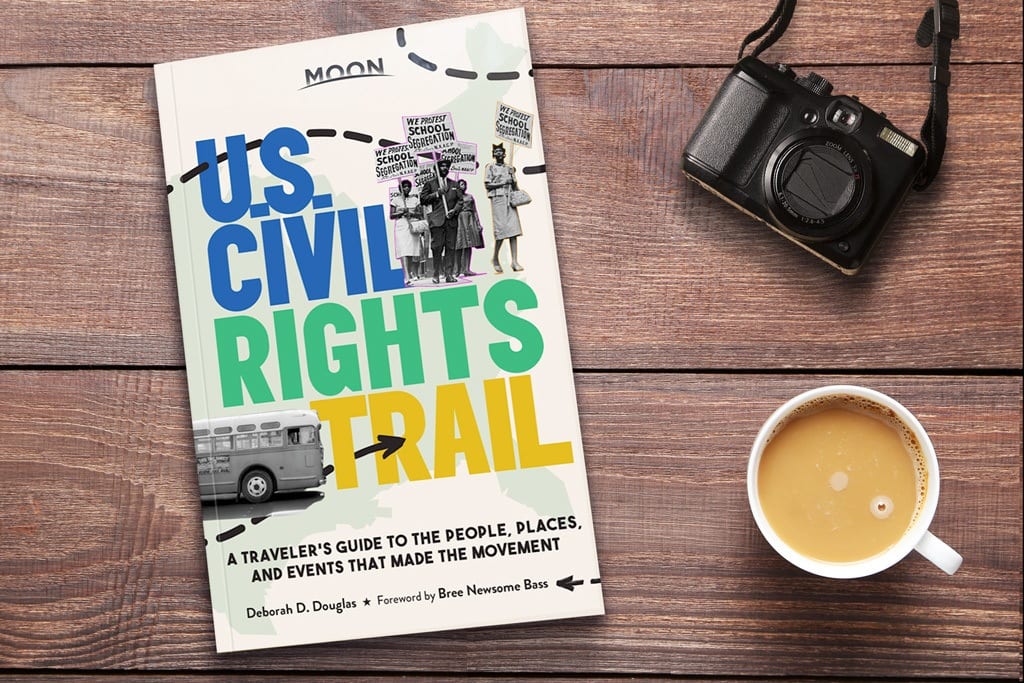
You will need a week to ten days to do a civil rights road trip right. There are so many sites to visit, but I would recommend including stops in at least Atlanta, Montgomery, Birmingham, and Memphis. It makes sense to start in Atlanta, the birthplace of Martin Luther King, Jr., and end in Memphis at the Lorraine Motel where he was assassinated.
However, there really is no right or wrong way to go. We actually started in Nashville, because Southwest had a fare sale there and I have been wanting to see the Music City anyway. So our road trip went like this: 3 nights in Nashville-3 nights in Memphis-1 night in Birmingham-a stop in Selma-1 night in Montgomery-3 nights in Atlanta.
If you want to do something similar, here is your guide. If you want to also see additional sites, make sure to check out the Alabama Civil Rights Trail for ideas like the Tuskegee Airmen National Historic Site.
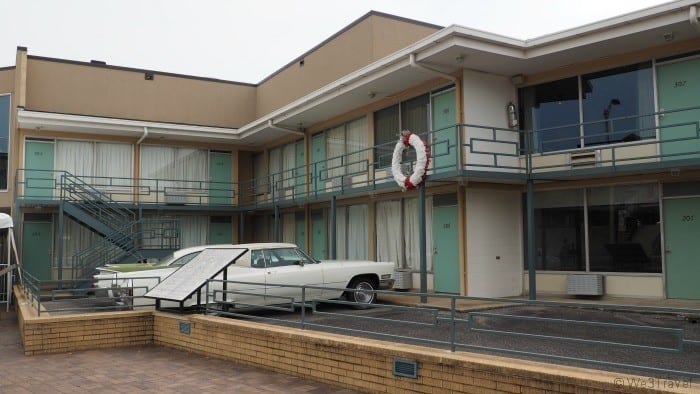
Civil Rights Sites in Nashville
Note: We received media rates or discounts for some of our hotel stays and tours, all opinions are my own. This post contains affiliate links. If you click a link and make a purchase, I may receive a small commission.
Nashville may sound like a surprising choice for a civil rights road trip, but many of the lunch counter protestors were trained in Nashville. Even more Nashville students participated in the Freedom Rides. Of course, a stop in Nashville is always a nice way to add some fun to the trip.
This growing city is hopping with energy, country music, and amazing food. Walk the streets of downtown to see the markers commemorating the lunch counter sit ins. Stay at the historic Union Station Hotel for easy walking access to both the downtown honky tonks, Country Music Hall of Fame, and the popular Gulch district.
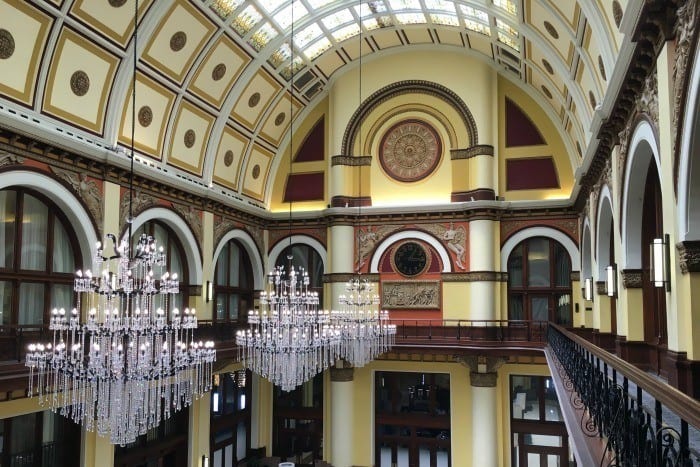
Civil Rights Sites in Memphis
Just three and a half hours southwest of Nashville, Memphis was the next stop on our civil rights road trip. While many people come to Memphis to see Graceland or maybe listen to some blues, the not-to-be-missed site in Memphis is the National Civil Rights Museum at the Lorraine Motel, which is the place where Martin Luther King, Jr. was assassinated.
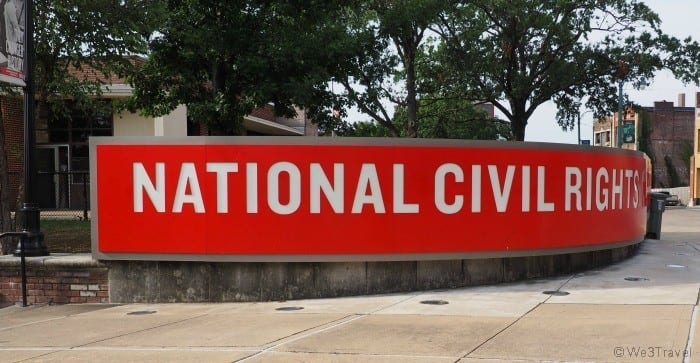
The exhibits start very appropriately with a look back at slavery. As you think of the 250 years that slavery existed in our country, it is easier to understand how racial prejudices have taken such deep root. When one race dares to hold another as “property,” the moral justification is that the “subservient” race is somehow less than the race claimed to be superior. Those attitudes run deep in the culture and are clearly taking a long time to change completely.
Visitors then enter into a theater for a look at segregation up through the Jim Crow era. From there, a series of exhibitions walk you through the main moments of the Civil Rights movement including: school desegregation, the Montgomery Bus Boycott, the Freedom Rides, student sit ins, the March on Washington, the Selma marches, the rise of the Black Power movement, and so much more.
The exhibits include video (such as MLK Jr.’s “I Have a Dream” speech,) and replicas of the bombed Freedom Rides bus and a Montgomery city bus. Stepping onto the bus and having the bus driver recording admonish you to go to the back of the bus gives you a small taste of what it was like to be black in the segregated south. Nothing as powerful of the lunch counter exhibit in Atlanta, but I can’t watch a video of MLK Jr.’s speeches without being moved by tears.

The final stop in the museum overlooks the rooms in the Lorraine Motel where Dr. King and his team spent his last hours. As you solemnly gaze out at the balcony where he was killed, you can’t help but be filled with emotion in such a tragic spot. Across the street, you can also visit the Legacy building, where the gun that killed Dr. King was shot. The exhibits here talk about possible alternate theories into who killed MLK, or at least, who else was involved.
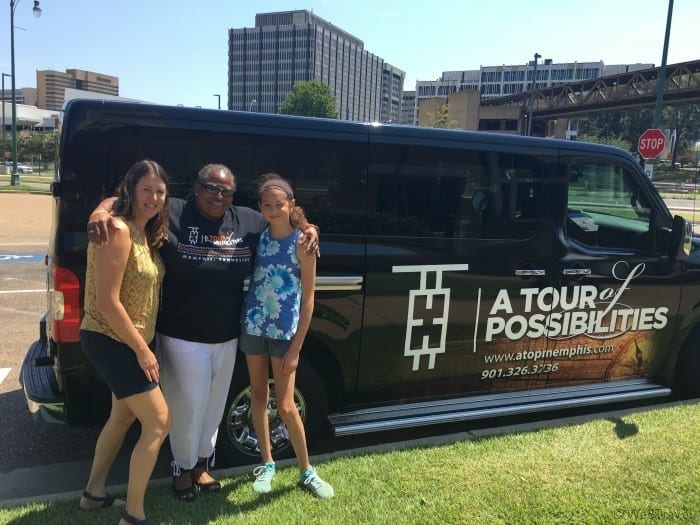
Your foray into history in Memphis shouldn’t stop at the Lorraine Motel. There is so much African-American History to explore in Memphis. The best intro would be to take the “Tour of Possibilities” with Queen. She will drive you around and tell you all about the area’s history, communities, and leaders (plus point out some amazing places to eat.) Even though Queen is a New York-native, she is very well connected in the community (as you can tell by everyone waving as her van drives by), and keeps the tour very entertaining.
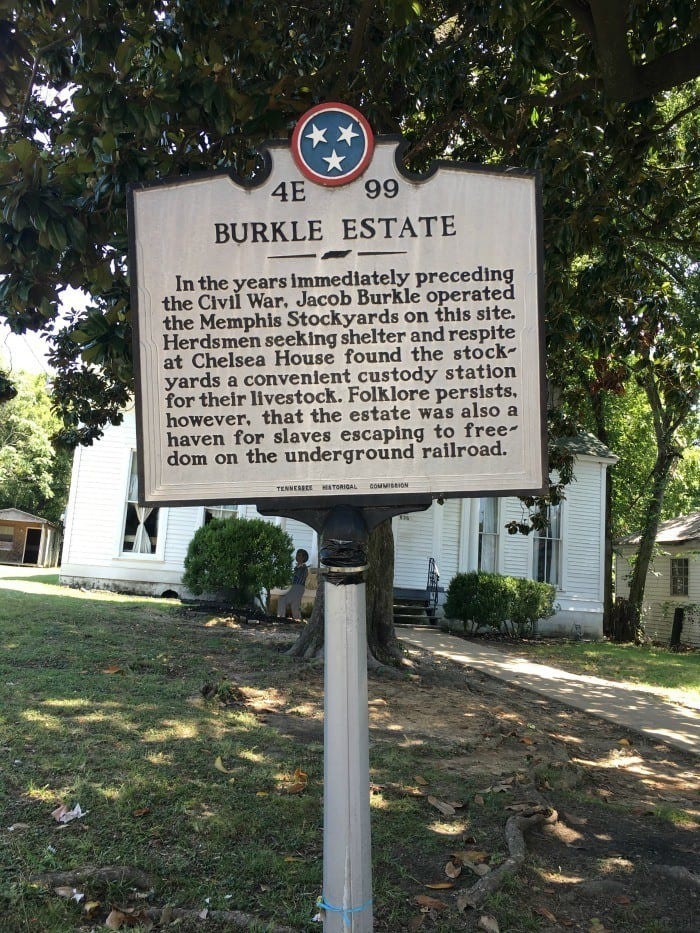
Another must-do site is Slave Haven, an antebellum home that was once a stop on the Underground Railroad for escaped enslaved people seeking freedom in the north. A quick look at this home might make you think it is something you can either skip or only spend a few minutes looking around and poking your head into the basement where enslaved people waited until it was safe to continue on their journey. Not so.
If you take a tour, the caretakers will walk you through the Middle Passage into slavery, talk to you about how the hymns and quilts passed the message of the route to freedom, educate you on how stereotypes in advertising were used to keep people of color down, and give you a glimpse at the bravery and ingenuity it took for the escapees and those that helped them. Plan on spending at least an hour and be prepared to open yourself up to a powerful experience.

If you visit Memphis, be sure to leave time for something a little more lighthearted, like the Duck Ceremony at the Peabody Memphis! We enjoyed our stay at this grand dame of hotels, conveniently located to all the downtown sights. Don’t miss some delicious soul food at Alcenia’s during your stay (see my other recommendations on where to eat in Memphis.)
Civil Rights Sites in Birmingham
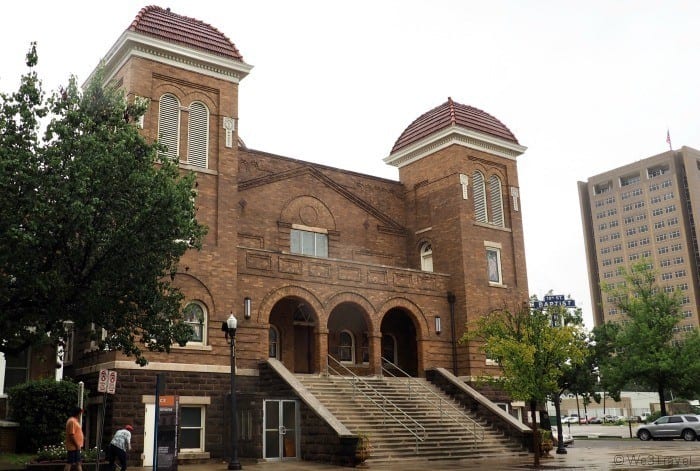
From Memphis, it is about a three-and-a-half drive down to Birmingham. If you are looking for a good stop along the way, take a detour to the college town of Oxford, Mississippi. Pop into Square Books for some reading material and have lunch at the Ajax Diner (but be warned that the portions are huge so you will want to share!)
Birmingham is a critical stop on a civil rights road trip. While the city going through a revitalization in spots, Birmingham was actually formed post-Civil War. Its entire history is rooted in segregation as it was being built. This is also why you saw such resistance to change and desegregation in Birmingham.
It was absolutely chilling to listen to civic leaders in Birmingham espouse their views about how the “negroes were better off under the white man.” It also resonated to see how hard the white supremacists fought against change that they felt was being forced on them by the liberal Yankees stirring up trouble – that rhetoric sounds so familiar to what we are hearing today.
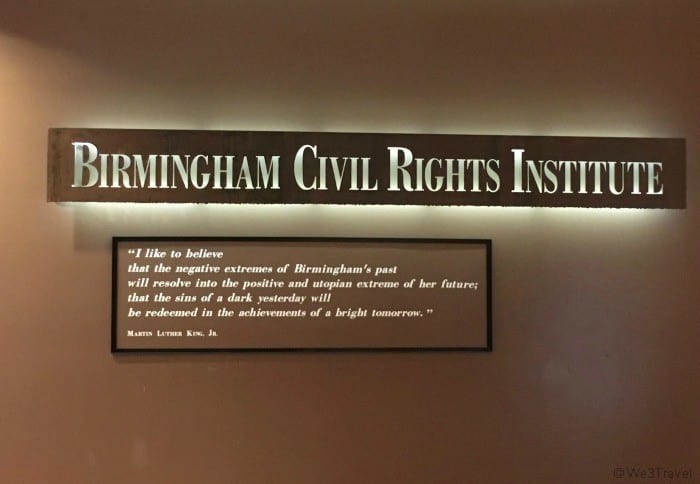
What was different about the Birmingham Civil Rights Institute compared to other civil rights museums is that it is focused largely on the civil rights issues and movement in Birmingham and Alabama. The exhibits start off with a short film that explains how Birmingham was created and the rise of Jim Crow and segregation.
The exhibits then try to create an understanding of the effects of segregation by showing the differences in education, employment opportunities, and access to medical care.
While the exhibits aren’t as high tech as what you will find in Atlanta or Memphis, the focus on Alabama gave it a different perspective, went deeper into some events and issues, and reinforced what we had learned in Memphis. There are also some very good exhibits that focus on worldwide human rights and the ongoing fight for civil rights globally.
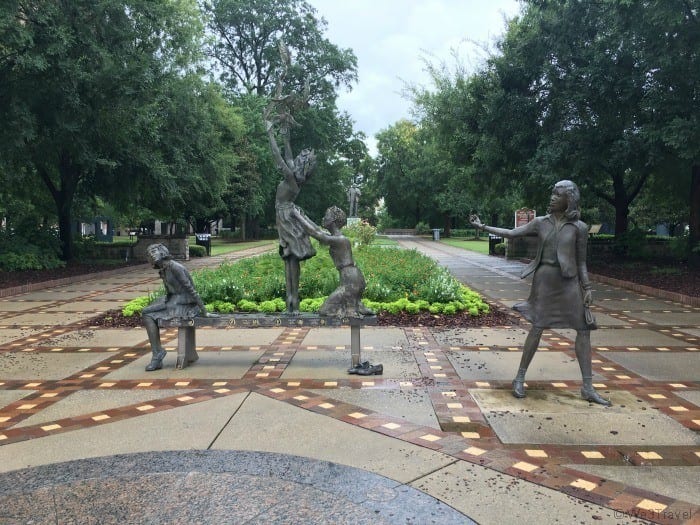
After visiting the Civil Rights Institute, you can walk across the street and visit the Sixteenth Street Baptist Church, where the horrific bombing in 1963 took the lives of four young girls attending Sunday school.
You should also take a stroll through Kelly Ingram Park, which is across the street from the Center and Church. The sculptures around the Freedom Walk through the park are powerful monuments to the heroes and reminders of the challenges of the fight for equality and civil rights.
While the area around the Civil Rights Institute is pretty quiet, Birmingham has many revitalized neighborhoods so there is no shortage of cute, fun places to eat during your visit. We stayed at the Westin Birmingham, which is part of the Uptown dining and entertainment district.
While you may want to drive if you are going out of this area, we had an excellent dinner of tapas at Ovenbird, finally tried Nashville’s hot chicken at Hattie B’s, and found a cute coffee shop and breakfast spot at Feast & Forest.
Civil Rights Sites in Selma
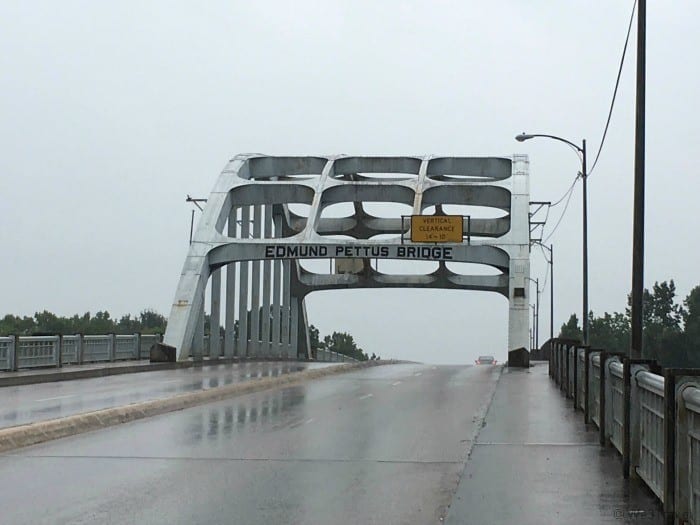
I had been warned that the town of Selma is struggling and is fairly depressed so there isn’t a lot to see, but I still wanted to see the Edmund Pettus Bridge in person. Hannah and I watched the movie Selma before we started our trip and it seemed important to walk across the bridge ourselves.
It isn’t too far of a detour to stop in Selma on your way from Birmingham to Montgomery. Unfortunately, we arrived in a torrential rain storm and we were soaked to our skin just walking up to the bridge and over to the small National Park interpretive center at the foot of the bridge.
So we didn’t fulfill our hope of walking the span of the bridge. The interpretive center is small and if you have already learned about the Selma marches for voting rights in Memphis or Birmingham, then you may not find anything new, but it did reinforce our previous museum visits.
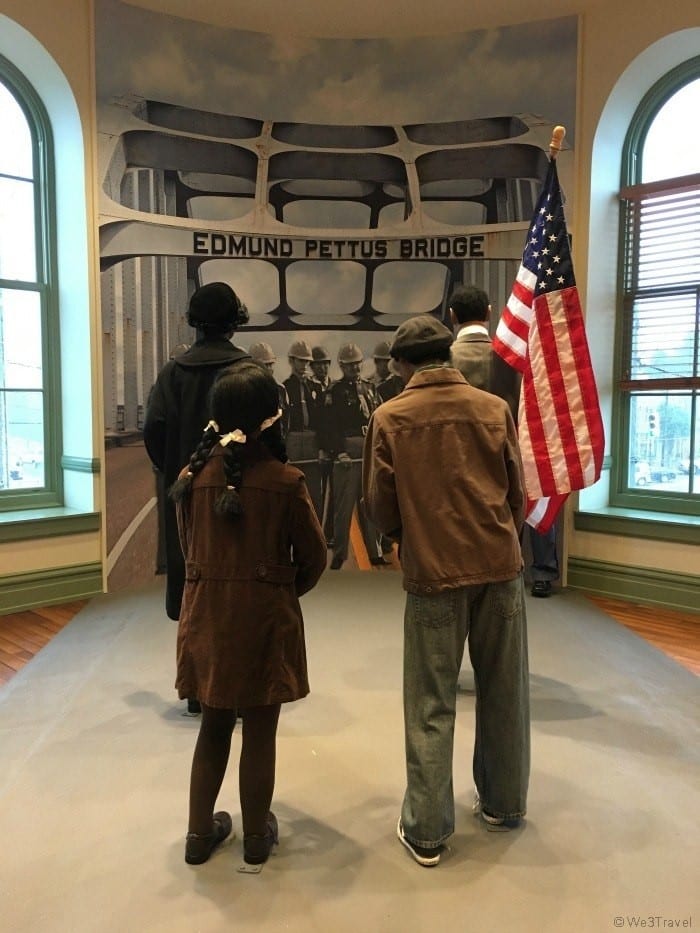
Civil Rights Sites in Montgomery
Montgomery is about an hour from Selma, or an hour and a half from Birmingham if you are going direct. While it is the state capital, the city itself also feels fairly quiet. There are a few civil rights-related places to visit, but on our one-day visit we focused on the Rosa Parks Museum and the Freedom Rides Museum.
The Rosa Parks Museum is extremely well done. You may need to wait for your next “tour” to start, but it is a self-guided museum. They just start groups in the experience at the same time and after the initial video experiences, you are free to explore on your own.
The Rosa Parks Museum starts by bringing you back to the events of December 1, 1955, when a tired Rosa Parks, who was sitting in the area permitted for African Americans, refused to give up her seat for a white person once the bus was full. For years, I was under the false impression that she was sitting in the front of the bus where she wasn’t allowed. Not true.
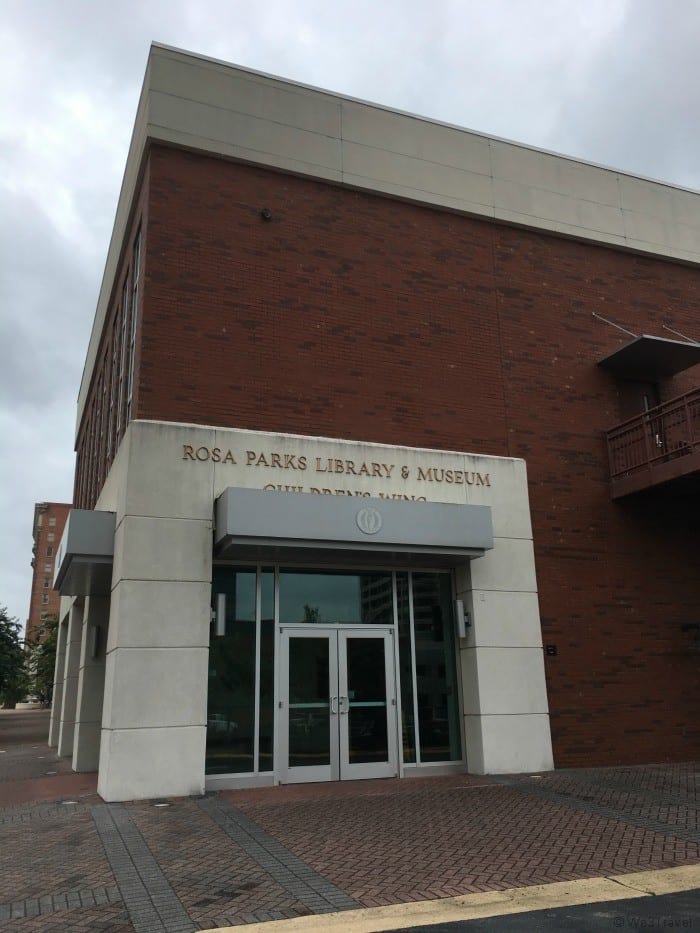
I also didn’t realize that federally, this type of segregation wasn’t allowed but Montgomery was following state laws. It was not just eye-opening, the exhibit really puts you in the moment when Rosa Parks had to make this life-changing decision that earned her the title of the “Mother of the Civil Rights Movement.”
From there, the museum follows the timeline of the Montgomery Bus Boycott and all the challenges involved. Again, I did not realize that this boycott, which was universally followed by all African Americans and many whites in the city, went on for thirteen months! Imagine the dedication! Since city residents were so dependent on the bus system to get to work, especially for women, a boycott of that length was challenging.
Martin Luther King, Jr. was very involved in organizing carpools to help these women get to work. Of course, in an effort to derail the boycott, the police harassed those taking carpools, limiting how many people could be in a car and making it illegal to pay as if it was a taxi service.
Protestors were also not allowed to meet in groups and the bus company tried to sue against the boycott, because it had such a fiscal impact on their business. Hannah and I both really enjoyed this museum and it was a trip highlight.
Next door at the Rosa Park Children’s Library, you can also board a “time machine” that walks you through the development of Jim Crow laws and the history of segregation. You will step onto a bus, which rocks and shakes as you leap through time, so it is entertaining for young kids but maybe not those that get scared too easily.
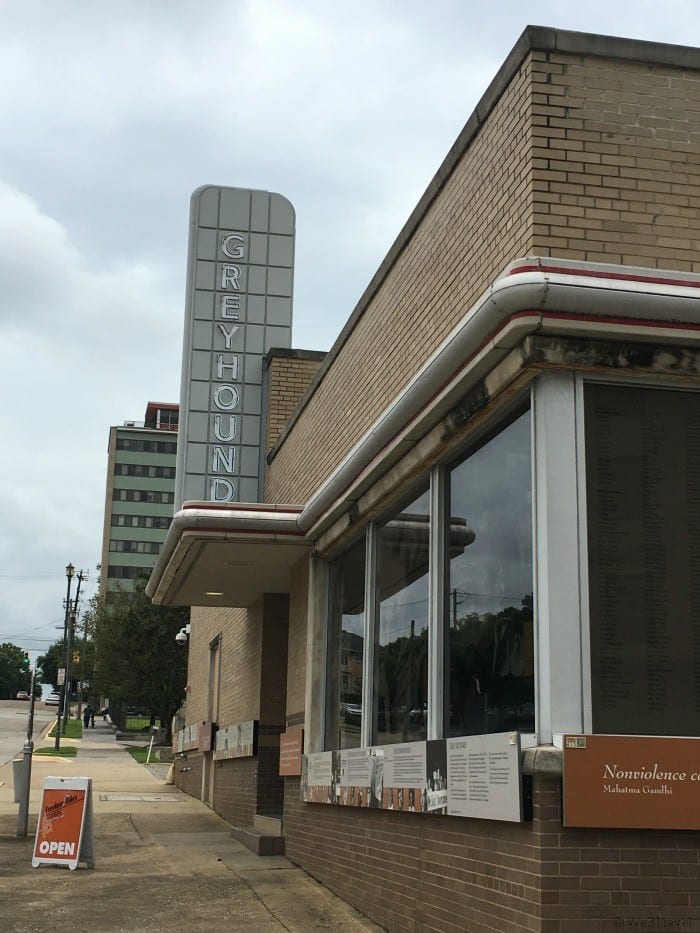
After the Rosa Parks Museum, we also walked over to the Freedom Rides museum, which is just a small museum, located in part of the original Greyhound bus station where the Freedom Riders arrived. The museum is small with just a few exhibits but it provides a deep dive into the Freedom Rides and lets you learn more about the brave individuals that took part in those rides.
We stayed at a Fairfield Inn outside of Montgomery because we needed to do some laundry (plus love the free breakfast and evening receptions), but if you need suggestions on where to stay and where to eat in Montgomery, check out suggestions from VacationMaybe.
Civil Rights Sites in Atlanta
The final stop on our civil rights tour was Atlanta, just a two-and-a-half-hour drive from Montgomery (not including the time change from Central to Eastern.) As the birthplace of Martin Luther King, Jr. and the meeting place of many civil rights leaders, Atlanta needs to be a part of any civil rights trip.
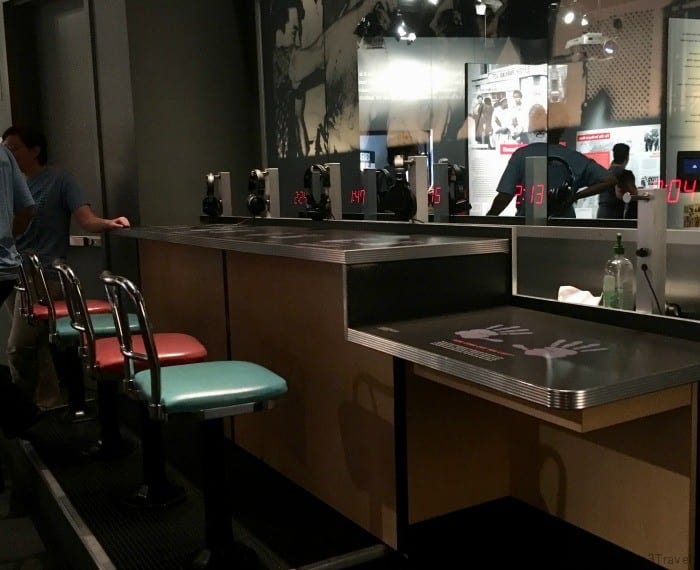
There are two main sites to visit. The first is the Center for Civil and Human Rights. Located in the same area as the Georgia Aquarium and World of Coca-Cola, you need to dedicate half a day to visit the Center for Civil and Human Rights (just note that they are closed on Mondays.) This museum is modern and all the exhibits make powerful use of technology to educate and evoke an emotional response, especially the lunch counter exhibit that I referenced above.
The museum is so well done but it doesn’t replace what we had already seen or learned in Memphis, Birmingham and Montgomery. If you can only visit Atlanta, then yes, it gives a very good overview of many of the main moments of the movement. However, I feel that just because you have been to the Center in Atlanta, doesn’t mean you shouldn’t visit other civil rights sights.
We both loved that it also includes exhibits on worldwide human rights. It highlights the defenders of human rights, and showcase the world’s worst human rights offenders. The exhibits also give you food for thought by talking about the human rights impacts of our consumer choices around goods like soccer balls, chocolate, and coffee.
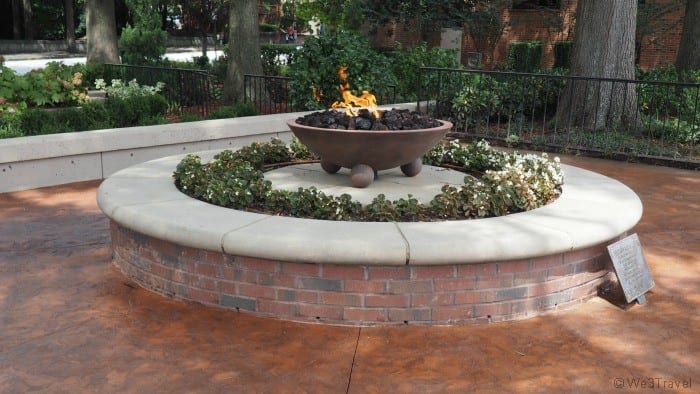
The other must-visit spot in Atlanta is the Dr. Martin Luther King, Jr. National Historic Site. In addition to a visitor center, you can also visit the Dexter Street Baptist Church, where MLK, and his father before him, was a minister. There is also the Martin Luther King, Jr. National Historic Site, where you both Martin and Coretta Scott King are both entombed, and an eternal flame continues to burn. Playing in the background is the audio of MLK’s “I Have a Dream” speech, providing a moving space to pay your respects. Down the road, you can even visit MLK Jr.’s birth home.
I’ll throw in one more thing to do in Atlanta that has to do with the civil rights movement, and that is the Martin Luther King Jr. Food Tour with Unexpected Atlanta. Sound surprising? We love exploring cities through food tours but this one combines history and amazing southern food.
The tour kicked off at Paschal’s, which still uses the same fried chicken recipe as when Martin Luther King, Jr. and his colleagues would meet at Paschal’s to plan protests and even the march on Washington. The tour finishes just a 10-minute walk to the MLK National Historic site, rounding out a day of learning and eating.
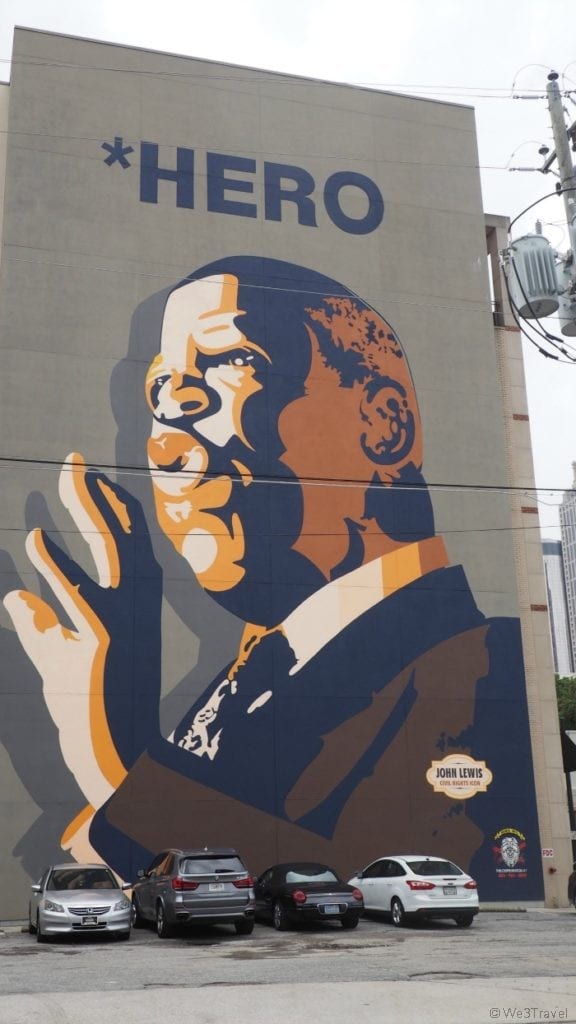
We spent three nights at the Loews Atlanta in Midtown, giving us plenty of time to explore the civil rights sites of Atlanta.
I know that a civil rights road trip may not be at the top of your bucket list. Your kids (or admit it, even you) may groan when they think about a vacation filled with museums and historic sights. But think about what is happening in our country today. Look at the rise of white supremacists and the national attention these alt-right groups are getting.
We need to take our kids to visit these sites. We need to talk to our kids about these issues. It is only by addressing these issues head on that we can teach our kids the values that we want to instill and show them why silence and ignorance are not options.
PIN THIS FOR LATER
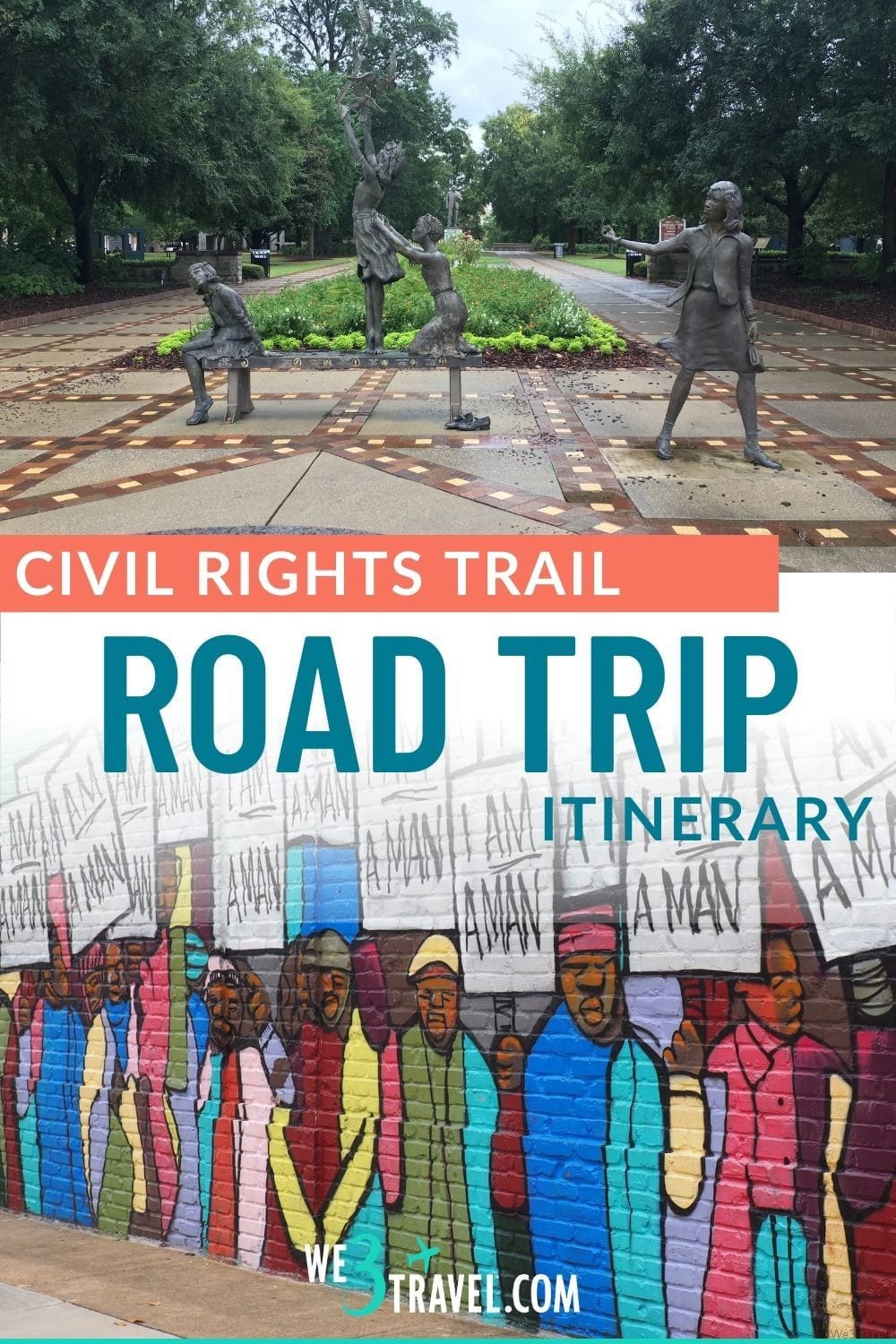

Tamara Gruber is the Founder and Publisher of We3Travel. A former marketing executive and travel advisor, Tamara is an award-winning travel writer and recognized expert in family travel. Tamara is a member of SATW and the Adventure Travel Trade Association, and serves on the Board of the Family Travel Association. She is also the publisher of YourTimetoFly.com and the co-host of the Vacation Mavens travel podcast.

